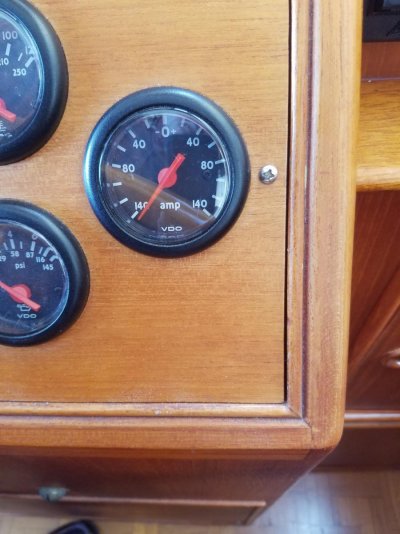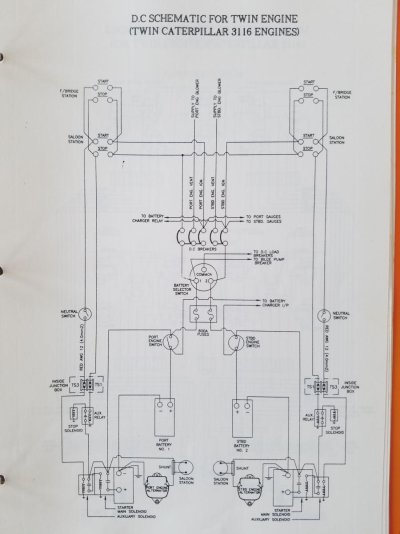Did you raise the engine above idle speed?
I'm going to suggest that the meters shown are not capable of showing a low amperage output. They show 140A-0A- 140A with the needle range of 270o.
The needle at 5- 10A will move very little. THat may have been what you saw.
I also note that the meters will work ONLY with output from the alternator. The meters, even though they are +/- meters, due to the shunt position will only show alternator output.
If the batts. are charged and you start the engine the alternator has very little to do. To boot unless the alternator revs are somewhat above engine idle revs it may not be capable of putting out much amperage. Most alternators need to be run at , at least , two to three times the engine rpm.
Take a look at an alternator output curve chart. Unless the alternator is specifically designed for very low rev. output it may only produce a few amps at engine idle. Typically that type of high output at low revs alternator is not installed except by an owner, either themselves or by a mechanic at the owners request.
To ensure the alternator is run properly the ratio between the crankshaft drive pulley and the alternator driven pulley must be known or estimated. Then the alternator rpm can be calculated and the output chart used.
Next time Shut the charger OFF.
Turn a bunch of stuff on to put a load on the alternators. In fact best if you just start one engine and turn on lights, fans, electronics, if you have an inverter/charger turn it on and use the inverter to boil a kettle but UNLPLUG the boat or turn off the 120V breaker so the charger part cannot operate and then see what the ammeter shows. Raise the engine revs to about 1500 rpm.
Then shut that engine down and start the other and do the same.
If the ammeters do not react, then there may be a problem.
You have enough suggestions about how to check for problems if indeed the ammeters are not working.
Your ammeters are shunt fed. The shunts are right next to the alternators on the dwg.
I will emphasize you must be absolutely positive that the wiring at the shunt itself AND the meter are in fact CLEAN AND TIGHT. The signal produced by a shunt is typically on the order of 50 milliamps at FULL range., less at lower alter. output. If the connections AND crimps are not clean and tight then that signal cannot get through. ALL CONNECTIONS/CRIMPS
My own had that problem when the boat was new to us and taking care of the connections including new terminals on the wires at both ends started my ammeter working.



